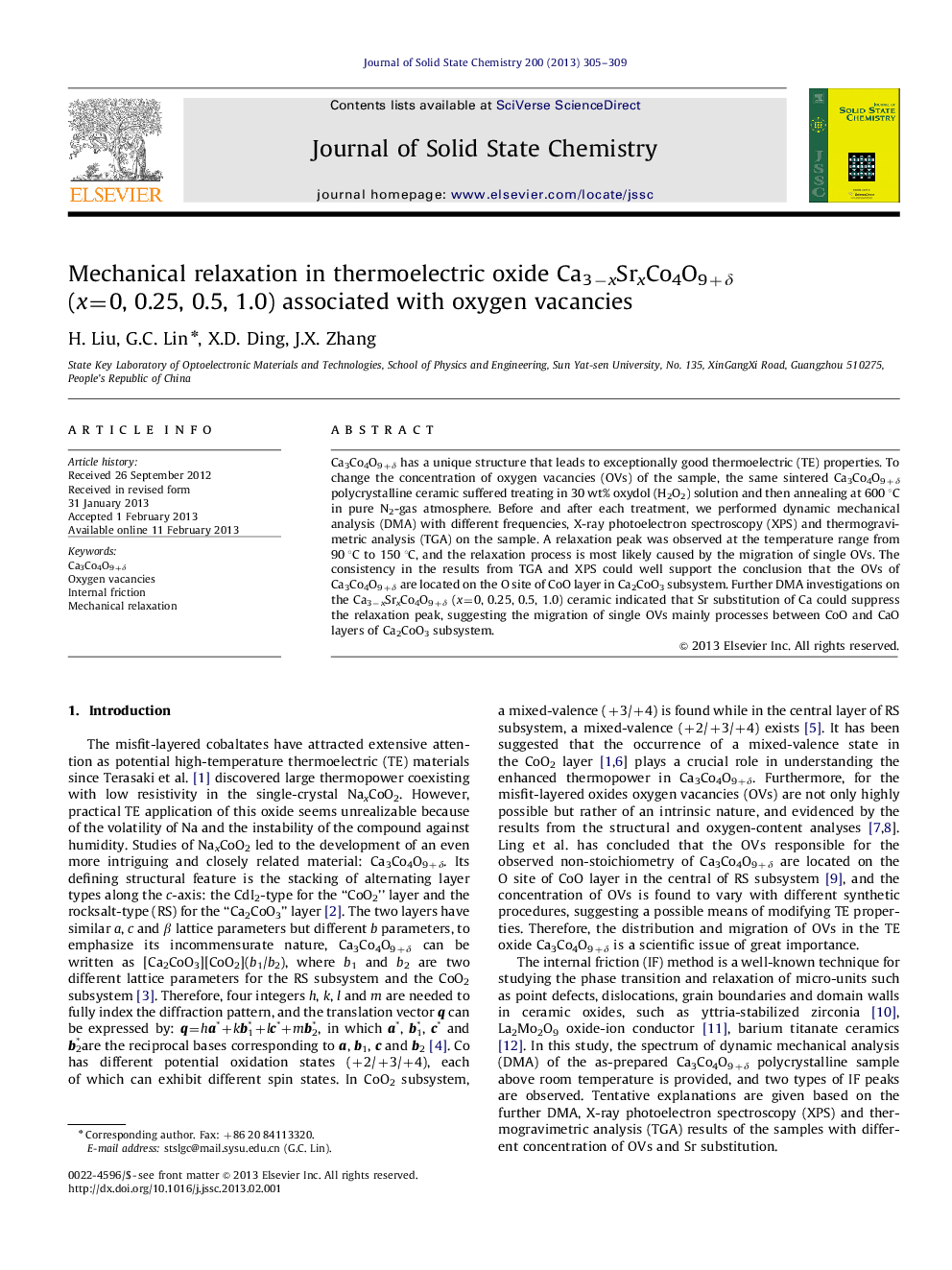| Article ID | Journal | Published Year | Pages | File Type |
|---|---|---|---|---|
| 1331226 | Journal of Solid State Chemistry | 2013 | 5 Pages |
Ca3Co4O9+δ has a unique structure that leads to exceptionally good thermoelectric (TE) properties. To change the concentration of oxygen vacancies (OVs) of the sample, the same sintered Ca3Co4O9+δ polycrystalline ceramic suffered treating in 30 wt% oxydol (H2O2) solution and then annealing at 600 °C in pure N2-gas atmosphere. Before and after each treatment, we performed dynamic mechanical analysis (DMA) with different frequencies, X-ray photoelectron spectroscopy (XPS) and thermogravimetric analysis (TGA) on the sample. A relaxation peak was observed at the temperature range from 90 °C to 150 °C, and the relaxation process is most likely caused by the migration of single OVs. The consistency in the results from TGA and XPS could well support the conclusion that the OVs of Ca3Co4O9+δ are located on the O site of CoO layer in Ca2CoO3 subsystem. Further DMA investigations on the Ca3−xSrxCo4O9+δ (x=0, 0.25, 0.5, 1.0) ceramic indicated that Sr substitution of Ca could suppress the relaxation peak, suggesting the migration of single OVs mainly processes between CoO and CaO layers of Ca2CoO3 subsystem.
Graphical abstractA relaxation peak and a transition peak could be observed in the internal friction spectra of Ca3Co4O9+δ. The calculated activation energy indicates the relaxation process is associated with migration of oxygen vacancies.Figure optionsDownload full-size imageDownload as PowerPoint slideHighlights► We performed dynamic mechanical analysis on the thermoelectric oxide Ca3Co4O9+δ. ► We observed a relaxation peak and a transition peak. ► The oxygen vacancies are located in CoO layer of Ca2CoO3 subsystem. ► The relaxation peak originates from migration of single oxygen vacancies.
